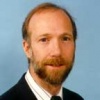According to Dr. James Reinertsen of the Institute for Healthcare Improvement, “Among the most highly valued characteristics of any profession is its autonomy—a privilege of self-regulation granted by society. During the 20th century, medicine rose to an unprecedented level of economic, political, and clinical autonomy, due to a number of factors, not the least of which was the extraordinary impact of science on the effectiveness of medical practice.”
As an autonomous profession, the practice of medicine has similarities to craftsmanship. An apprentice works for a craftsman in return for training in the field (medical student). As a journeyman, he’s equipped to work for pay under the supervision of another (resident physician). Finally, he ascends to the level of craftsman (practicing physician). His career is marked by always making the “right” decisions based on his training, his own knowledge base, and his personal experience.
During most of the 20th century in health care, there existed a relative level of complacency based on the assumption that physicians essentially always made the “right” decisions. The underlying assumption was that their rigorous training was a sufficient foundation upon which any physician could reliably have the information and training to make the “right” decision for his patient. There existed a faith in the ability and the reliability of the “craft of medicine.”
In 1973, John Wennberg documented widespread variation in practice patterns across the country. How could there exist wide variation in practice if, in fact, physicians were all reliably making the right decisions?
Ironically, whereas the increase of scientific evidence over the past 35 years has increased that number to perhaps 20 percent, the sheer volume of scientific evidence has further weakened any reasoned faith in the craft of medicine. In 1966, there was approximately one randomized placebo controlled trial (RPCT), a scientifically rigorous type of medical study designed to produce evidence-based practice, published in the medical literature per year. By 1995, there were 10,000 RPCTs and 12,500 in 2003. The doubling time of medical knowledge is now only eight years. The sheer volume of scientific information now far exceeds any individual’s ability to discover, process, compare, and implement.
In 2000, complacency gave way to distress when the Institute of Medicine published its landmark report, “To Err is Human,” an exposition of the extent of medical errors. The human cost of medical errors is high. Based on the findings of one major study, medical errors kill some 44,000 people in U.S. hospitals each year. Another study puts the number much higher—at 98,000. Even using the lower estimate, more people die from medical mistakes each year than from highway accidents, breast cancer, or AIDS.
A final blow to the craft of medicine came from two studies in a report from the RAND Corporation showing that for many clinical conditions with known best practices for high-quality care, only about 50 percent of patients receive care consistent with the recommendations.
The craft of medicine is dead. What should take its place and the hurdles that stand in the way will be the subject of next month’s article. IBI

